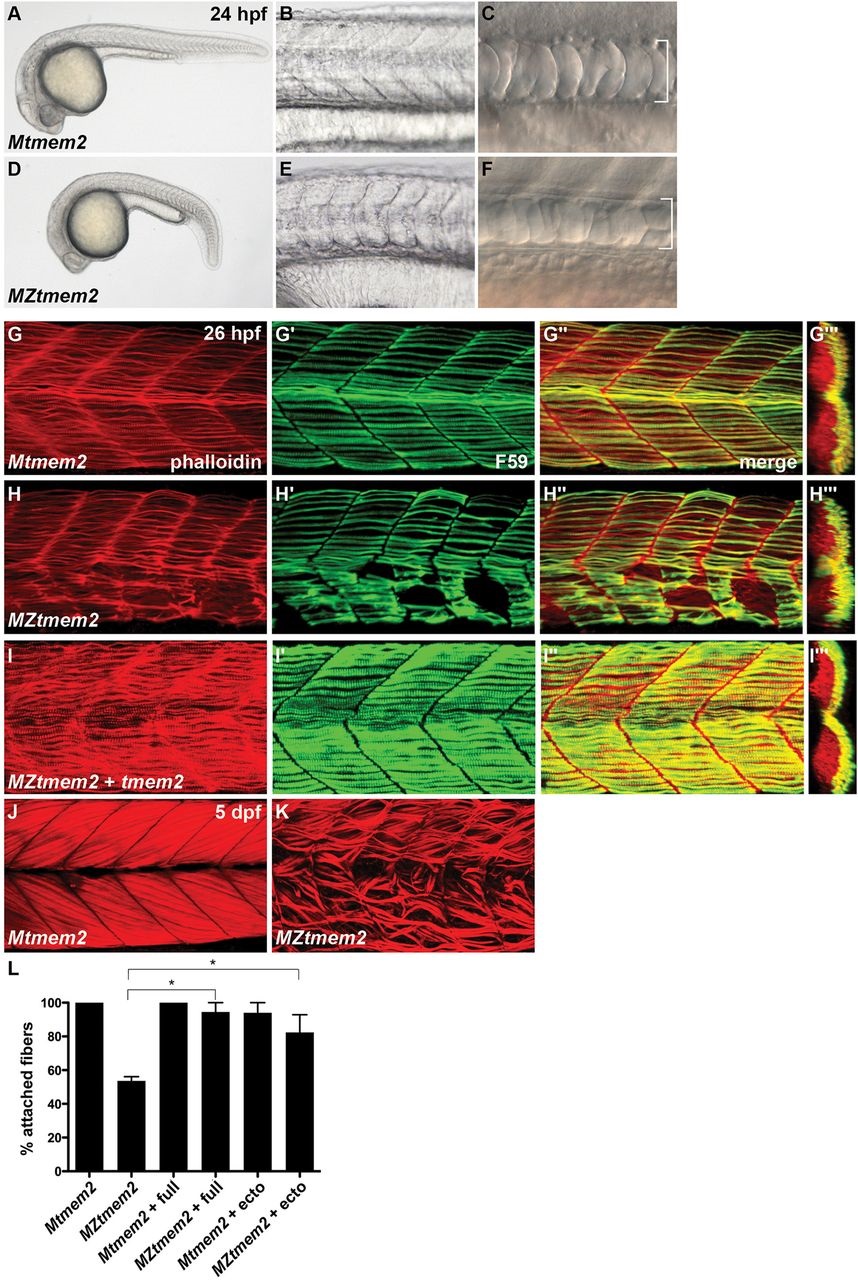Fig. 1
Disrupted muscle fiber attachment in MZtmem2 mutants. (A-F) Lateral views display somite and notochord morphology at 24hours post-fertilization (hpf). Mtmem2 (A-C) control siblings are indistinguishable from wild-type. MZtmem2 mutants (D-F) exhibit a normal number of somites (32 somites in A,D) but have U-shaped (E) rather than chevron-shaped (B) somites and a slightly narrow notochord (bracket, F). (G-K) Immunofluorescence reveals muscle fiber organization, using Phalloidin (red) to recognize both fast and slow fibers and F59 (green) to recognize slow fibers; lateral views with dorsal up (except for transverse views in G′′′-I′′′) at 26hpf (G-I) or 5days post-fertilization (dpf) (J,K). MZtmem2 mutants display muscle fiber detachment (H-H′′), whereas Mtmem2 siblings exhibit normal fiber attachment (G-G′′). Attachment can be rescued in MZtmem2 mutants by injection of wild-type tmem2 mRNA (I-I′′; n=6/7). The severity of detachment in MZtmem2 mutants increases over time (K), indicating the importance of tmem2 for the maintenance of muscle fiber attachment. (L) Bar graph compares average prevalence of fiber attachment in somites at 48hpf; error bars indicate s.e.m. F59+ fibers were counted within 11 somites of multiple embryos [Mtmem2, n=6; MZtmem2, n=4; Mtmem2 expressing full-length tmem2 (?+full?), n=6; MZtmem2+full, n=8; Mtmem2 expressing tmem2 ectodomain (?+ecto?), n=2; MZtmem2+ecto, n=5]. Introduction of either full-length Tmem2 or the Tmem2 ectodomain into MZtmem2 mutants caused improvement in fiber attachment. Asterisks indicate significant differences from MZtmem2 (Student′s t-test; P<0.001 for full, P<0.05 for ecto). See also Table S1.

